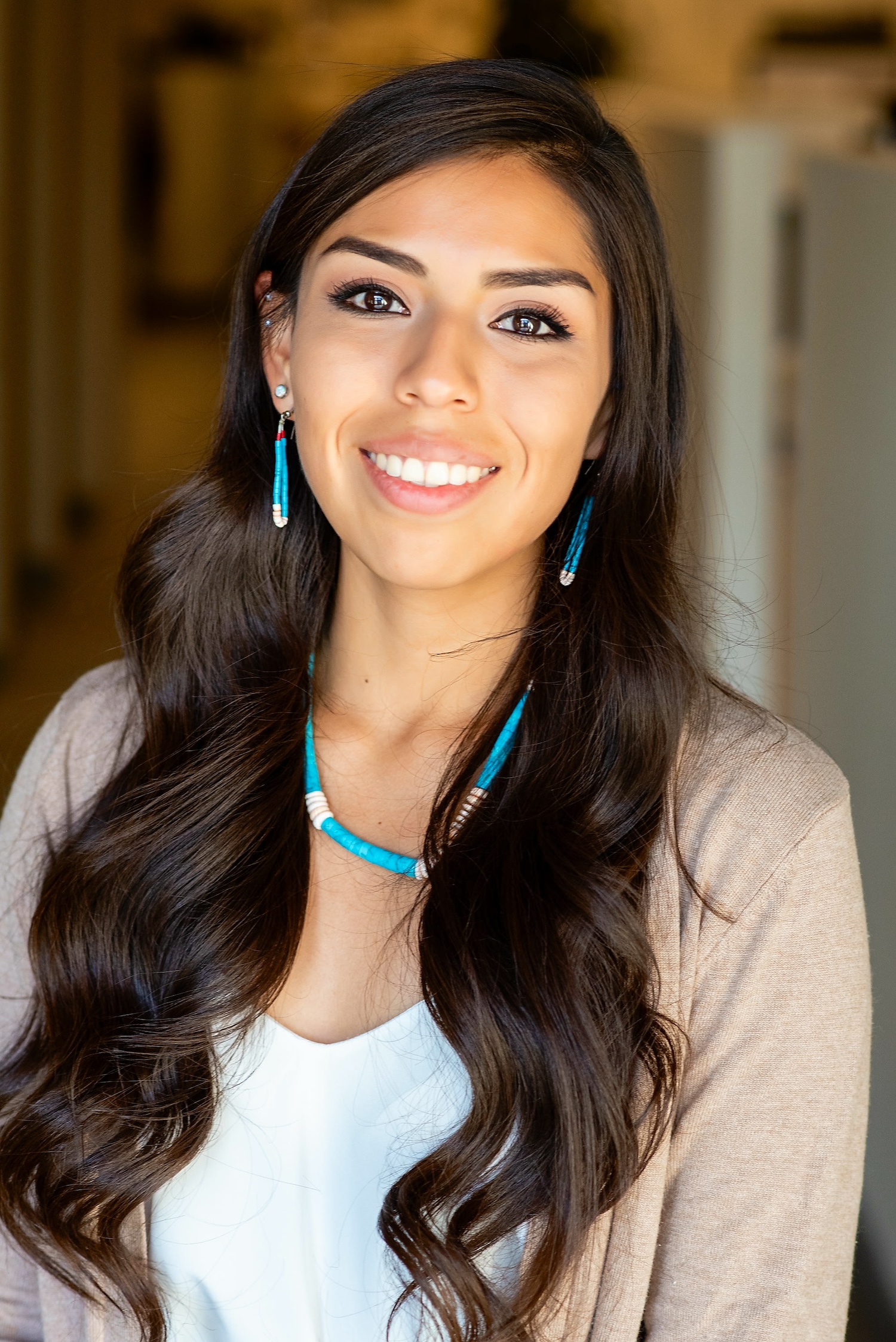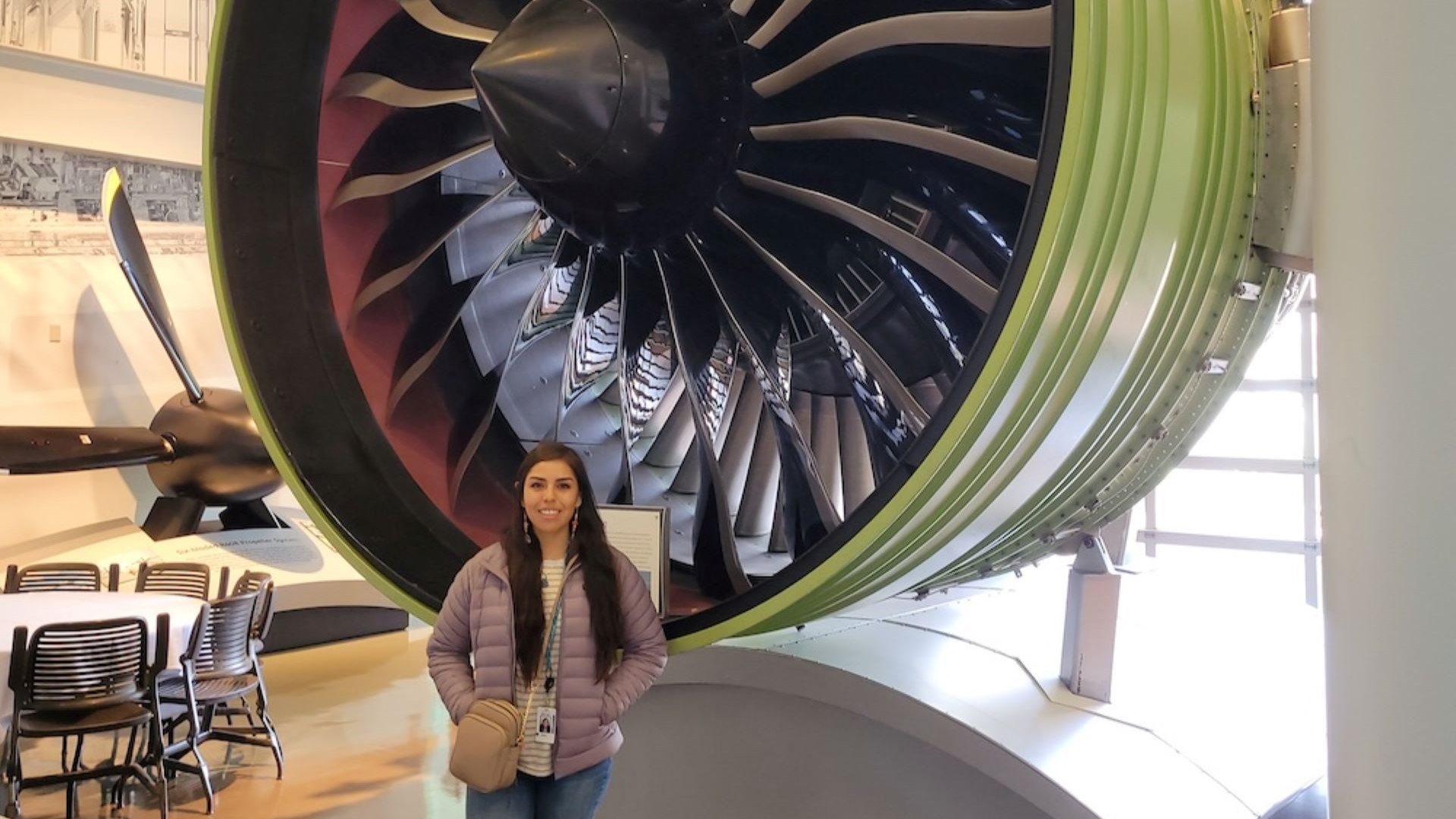Brittany Nez, RISE Program Controls Engineer, Champions More Sustainable Aviation and New Perspectives
November 12, 2024 | by Dianna Delling
Brittany Nez, a member of the Diné (Navajo) Nation, grew up in Flagstaff, Arizona, just west of the Navajo Reservation. She spent every summer on the reservation, staying with her paternal grandmother, and to this day still goes back to visit her grandmother’s house. Her heritage and Navajo values, from the importance of family to respect for the land and its resources, are a huge part of her life.
On one particular middle school trip, though, she was visiting to learn about space exploration. Nez’s science class was taking a field trip to a NASA research site on Navajo Nation land in northeastern Arizona, where scientists were testing Martian and lunar rovers. The agency selected the location for its unique geographic features, which are similar to those on the Red Planet: rugged canyons, dramatic rock formations, and vast, windswept expanses. Surrounded by her peers and the landscape she’d grown up with, Nez listened intently as the scientists described their work. “It was the first time I’d heard of an aerospace engineer,” she recalls. “Then and there, I knew it was what I wanted to do. I thought, OK! This is my path.”
Nez stayed true to her vision, going on to graduate from Arizona State University, earn her master’s at the University of Colorado in Boulder, and make her way to a position that combines her professional interests with her principles. Today she’s a lead controls engineer at GE Aerospace, where her focus is advancing technologies for more sustainable flight. “As a controls engineer, I design the control logic that will be applied to the software that sets up the engines to be doing what they need to be doing at each moment throughout flight,” she explains.

Working remotely from her home in Conifer, Colorado, a mountain town just southwest of Denver, Nez is part of CFM’s Revolutionary Innovation for Sustainable Engines (RISE) team, advancing technologies to support flight that aims to be 20% more fuel-efficient, with 20% lower carbon emissions, than current commercial engines. Introduced in 2021 by CFM International, a 50/50 joint company between GE Aerospace and Safran Aircraft Engines, the RISE program is aiming to reshape the future of flight, and Nez is excited to be a part of it.
“I want to be better for the environment, and a caretaker for the lands that I live on,” she says. “That’s a big part of my Native culture and what I want to work towards. Working on a more sustainable engine concept, being able to apply my expertise to something I really care about, is a big draw for me.”
Finding Support — and Paying It Forward
The path to becoming an aerospace engineer involved commitment and perseverance, both of which came easy for Nez. “I got that work ethic as a kid,” she explains. “My family were cattle ranchers, so we would be out doing manual labor all the time in the hot sun.”
The bigger challenge was building confidence and bridging cultures as she forged her way in a field with few women role models, and even fewer Native American ones. Nez found guidance in aunts and uncles who are engineers, and through participation in AISES, the American Indian Science and Engineering Society. The group focuses on advancing Indigenous representation in STEM studies and careers, and it helped Nez connect with professionals all across the country.
One of them, NASA aerospace engineer Joseph Connolly, has served as one of her most influential mentors. Connolly is a deputy for electrified aircraft technology integration at NASA’s Glenn Research Center in Cleveland and a member of the Haudenosaunee (Iroquois) tribe. Nez applied for a NASA internship with Connolly in 2021 after chatting with him online during the AISES conference, which was held virtually that year due to the COVID-19 pandemic. That five-month stint at the Glenn Research Center, where she investigated control technologies for a hybrid engine project, “opened the door to the idea of more sustainable engine concepts for me,” she says. It also paved the way to her current position at GE Aerospace, where she has worked since 2023.
Nez is still active in AISES, mentoring teams in its First Nations Launch program, a rocketry competition open to Native students at colleges across the United States and Canada. She also makes time to mentor students who are beginning their engineering careers. “I love helping students,” she says. “My tribe has helped me get to where I am, and I want to take my learnings and give back to the Native community.”

Nez's GE Aerospace Network
At GE Aerospace she participates in the Native American and Indigenous Peoples Network, which she hopes can increase its membership base. “I’m a big advocate for bringing more Native representation into the STEM industries, where our numbers are small,” she says. “We have a lot of amazing and innovative ways of going about things, and we can bring new ideas and perspectives to the different STEM fields.”
As Nez has seen while working on the RISE program, new approaches are critical to developing more efficient ways to fly — and to meeting the industry-wide goal of net zero carbon emissions by 2050. “It’s nice to see all of these new, innovative technologies coming about because of the push toward sustainability,” she says. “From an engineering perspective and a sustainability perspective, it’s really exciting to be able to see what’s coming for GE Aerospace and the aerospace industry.”
GE Aerospace is looking for talented, innovative engineers globally to help advance aerospace for future generations. Explore opportunities and apply online for engineering roles at invent.ge/engineering to see your ideas take flight.
